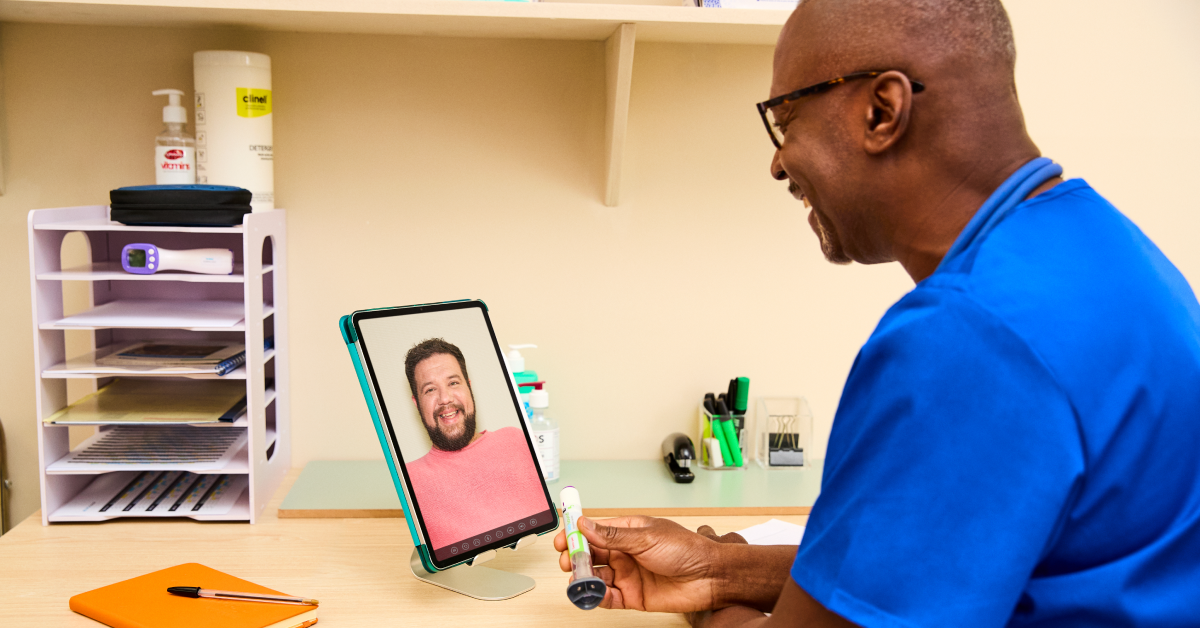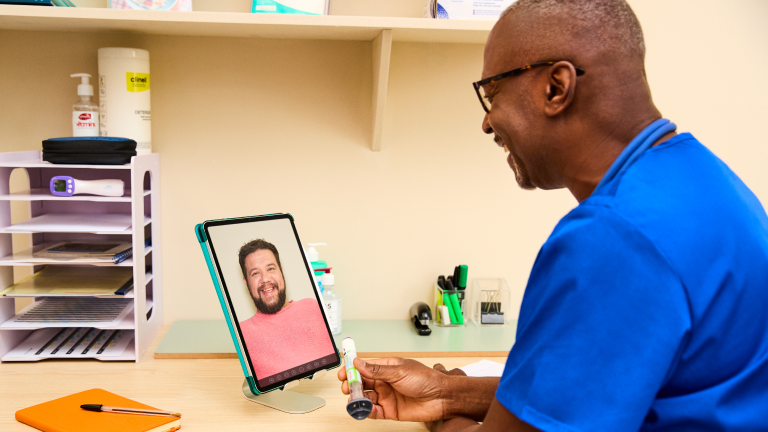How to navigate the Ozempic shortage


While the GLP-1 medication Ozempic has been FDA-approved since late 2017, its popularity has surged in recent years. That’s because even though it’s approved for helping manage type 2 diabetes, it can also help users lose a significant portion of weight, which increased demand for the drug. The result: Ever since 2022, it’s gone in and out of stock at pharmacies for months at a time. If you’re prescribed the medication and then encounter an Ozempic shortage, it’s important to know your options.
Is there a shortage of Ozempic?
Ozempic remains on the FDA shortage list, even though all doses are listed as “available” on the latest listing from the FDA, which tracks availability. (While this is true at the time of publication, things can change—visit the FDA tracker for the latest shortage information.) The shortage also applies to Wegovy, which has the same active ingredient as Ozempic (semaglutide) and is FDA-approved for weight loss.
But that doesn’t mean that Ozempic will necessarily remain in stock at pharmacies, since GLP-1 availability tends to be cyclical, according to Dr. Sarah Fishman, M.D., a board-certified endocrinologist in New York. “A Wegovy shortage led to an increase in the use of Ozempic,” she says. “Then an Ozempic shortage started around the time Mounjaro was released.” (Mounjaro is another GLP-1 that uses a different active ingredient, tirzepatide, but works similarly to semaglutide.)
Why is there a shortage of Ozempic?
Ozempic shortages have occurred due to supply and demand — demand became greater than supply, so there wasn’t enough of the medication for everyone who needed it. For context, Ozempic is FDA-approved only for the treatment of type 2 diabetes, which it helps manage by controlling blood sugar. But those taking the drug also reported weight loss, and that drove Ozempic to be used off-label (when a provider prescribes a drug for something other than what it’s FDA-approved for), leading to shortages.
Over the past year, more and more insurers are tightening their coverage of Ozempic, meaning they won’t cover it when prescribed off-label. This is one factor that has helped with its newfound availability. Another possible contributor: Novo Nordisk, which manufactures both Ozempic and Wegovy, announced that it was spending a significant amount of money (to the tune of $6.5 billion) to increase the supply of both drugs — making it easier for you to fill your weight-loss prescription medication.
Consequences of the Ozempic shortage
If you haven’t yet started on a GLP-1 Companion Program and Ozempic is on backorder, you likely won’t get prescribed the medication at all, says Candis Morello, PharmD, a professor of clinical pharmacy at University of California San Diego. The goal is to “make sure the patients who are already on it are going to be able to maintain it,” she says.
But if you’re already taking Ozempic and there’s a shortage, you might not be able to get your prescription filled or, if you are, not the full supply. “Some insurances will pay for a 90-day supply. When we start having these shortages, we’re sometimes only allowed to prescribe in 30-day increments,” says Morello. That means more trips to the pharmacy, with no guarantee that they will have your medication in stock.
Not only is a shortage inconvenient, but it can also lead to breaks in care, according to Fishman. The drug is given as a weekly injection, so you might find yourself skipping a week while you search for a pharmacy that has it in stock. A week here and there without Ozempic won’t have a huge effect on your health, but if you go longer than that, its power to reduce your appetite and manage your blood sugar will wear off. And if your blood sugar goes up because it’s no longer being controlled by the medication, you can experience symptoms like fatigue and blurred vision—especially for those already experiencing Ozempic side effects, such as nausea or gastrointestinal discomfort, which may fluctuate with inconsistent dosing.
What to do if Ozempic is out of stock
First, ask your pharmacist if they have a waitlist for backorders. Not all pharmacies will have a waitlist because they can be difficult to maintain, says Morello, but getting put on one can be a way to ensure you’re told when the pharmacy gets more supply.
After you do that, Fishman recommends calling around to different pharmacies to see who might have the medication available; because there are different distributors sending supply to various pharmacies, it’s entirely possible for a community pharmacy one town over to have Ozempic in stock even when yours is dealing with a backorder. This process can be time-consuming, but if you’re a member of WeightWatchers Clinic, your Care Team will call up to 10 pharmacies a week for you. You’ll also have your clinician, registered dietitian, and fitness coach at the ready to help you make any necessary lifestyle changes so that the Ozempic shortage doesn’t derail your treatment plan.
Ozempic alternatives
The good news: Ozempic alternatives abound. When there’s an Ozempic national shortage at hand, “I’ll usually see if we can switch to a different GLP-1 agonist,” says Fishman. Victoza (liraglutide), Trulicity (dulaglutide), Rybelsus (semaglutide), and Mounjaro (tirzepatide) are all GLP-1 agonists that have FDA-approval for treating type 2 diabetes.
Talk to your provider about the pros and cons of different GLP-1s. For instance, Rybelsus is an oral version of semaglutide that needs to be taken daily (while Ozempic is a weekly injection). There haven't been any direct studies comparing the oral and injectable versions, but Fishman has found that the oral ones aren’t as effective.
The bottom line
Ozempic, a GLP-1 that’s FDA-approved for type 2 diabetes, has been on the FDA drug shortage list for years. While in shortage, availability may vary. If you are taking Ozempic and can’t find the medication, call around to different pharmacies in your area to see if one has it in stock. If you still can’t find it, talk with your provider about alternatives so that you can keep your blood sugar — and your overall health — under control.
Ozempic shortage FAQs
Studies show that when you stop taking Ozempic, you are likely to regain at least some of the weight back. If you stop taking Ozempic, you will also experience higher blood sugar levels. That’s why it’s considered a long-term medication that should be paired with regular exercise and a nutritious, well-rounded diet.
You can give them a call. You might need to call multiple locations to find one that has Ozempic in stock. If you're a member of WeightWatchers Clinic, we'll call up to 10 pharmacies a week on your behalf to help you locate GLP-1 medications like Ozempic during shortages.
Rybelsus is an oral semaglutide medication — it uses the same active ingredient and is approved for type 2 diabetes treatment. Some people may prefer Rybelsus if they don’t want a weekly injection, but it is not as effective as Ozempic.
This content is for informational purposes only and does not constitute medical advice, diagnosis or treatment. It should not be regarded as a substitute for guidance from your healthcare provider.
The FDA reports semaglutide shortage: FDA Drug Shortages (2024). "Current and Resolved Drug Shortages and Discontinuations Reported to FDA." https://www.accessdata.fda.gov/scripts/drugshortages/dsp_ActiveIngredientDetails.cfm?AI=Semaglutide%20Injection&st=c
Semaglutide's effect on blood sugar: Journal of Diabetes & Metabolic Disorders. (2021.) "Efficacy and safety of semaglutide in glycemic control, body weight management, lipid profiles and other biomarkers among obese type 2 diabetes patients initiated or switched to semaglutide from other GLP-1 receptor agonists." https://www.ncbi.nlm.nih.gov/pmc/articles/PMC8630305/
Average weight loss with Ozempic: Nature Medicine. (2022) "Two-year effects of semaglutide in adults with overweight or obesity: the STEP 5 trial." https://www.nature.com/articles/s41591-022-02026-4
New investments are coming: Good Morning America (2024). "Top exec at maker of Ozempic, Wegovy talks surging demand." www.goodmorningamerica.com/wellness/video/top-exec-maker-ozempic-wegovy-talks-surging-demand-109860520
Insurers tighten coverage for Ozempic: Reuters (2023). "Focus: US diabetes patients face delays as insurers tighten Ozempic coverage." www.reuters.com/business/healthcare-pharmaceuticals/us-diabetes-patients-face-delays-insurers-tighten-ozempic-coverage-2023-12-12/
FDA released semaglutide shortage guidelines: FDA (2024). "Medications Containing Semaglutide Marketed for Type 2 Diabetes or Weight Loss." www.fda.gov/drugs/postmarket-drug-safety-information-patients-and-providers/medications-containing-semaglutide-marketed-type-2-diabetes-or-weight-loss
What to do if you miss a dose: Clinical Diabetes (2023). "Special Report: Potential Strategies for Addressing GLP-1 and Dual GLP-1/GIP Receptor Agonist Shortages." www.ncbi.nlm.nih.gov/pmc/articles/PMC10338283/
Long-term effects of semaglutide: JAMA (2021). "Effect of Continued Weekly Subcutaneous Semaglutide vs Placebo on Weight Loss Maintenance in Adults With Overweight or Obesity." jamanetwork.com/journals/jama/fullarticle/2777886
Oral semaglutide efficacy: Diabetology (2024). "Effectiveness of Oral versus Injectable Semaglutide in Adults with Type 2 Diabetes: Results from a Retrospective Observational Study in Croatia." mdpi.com/2673-4540/5/1/5
